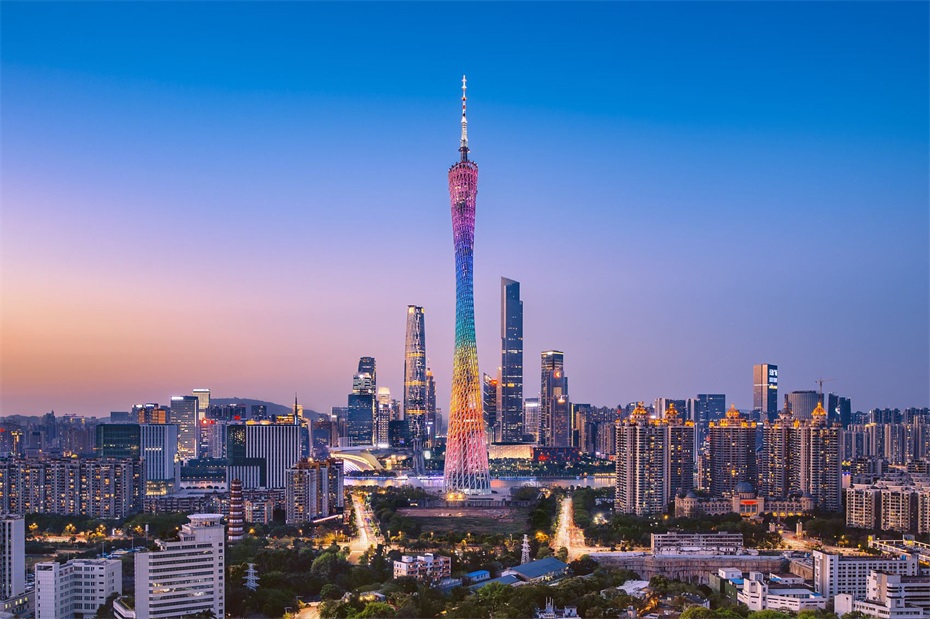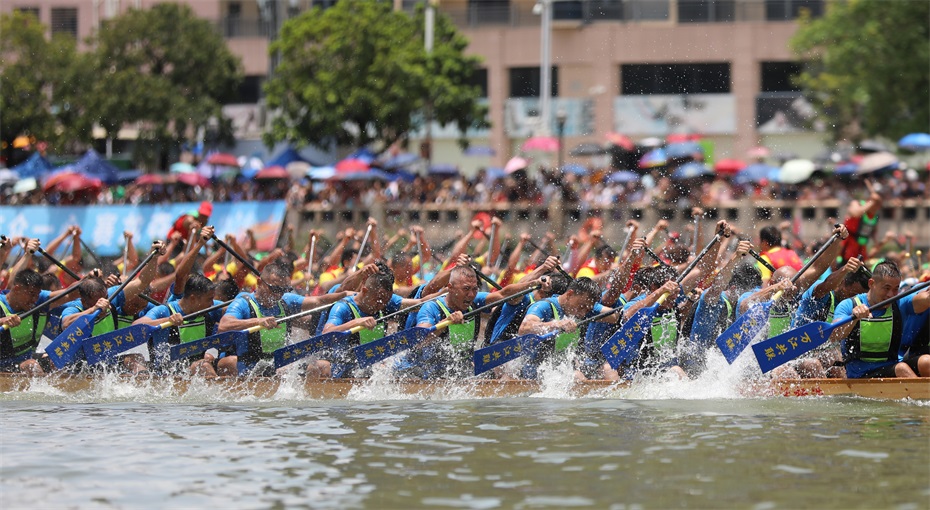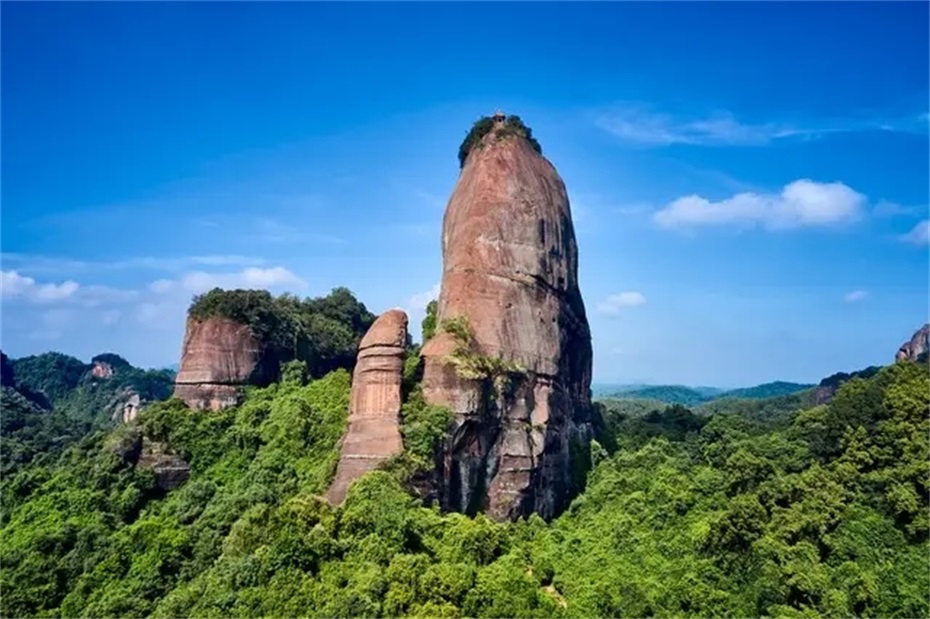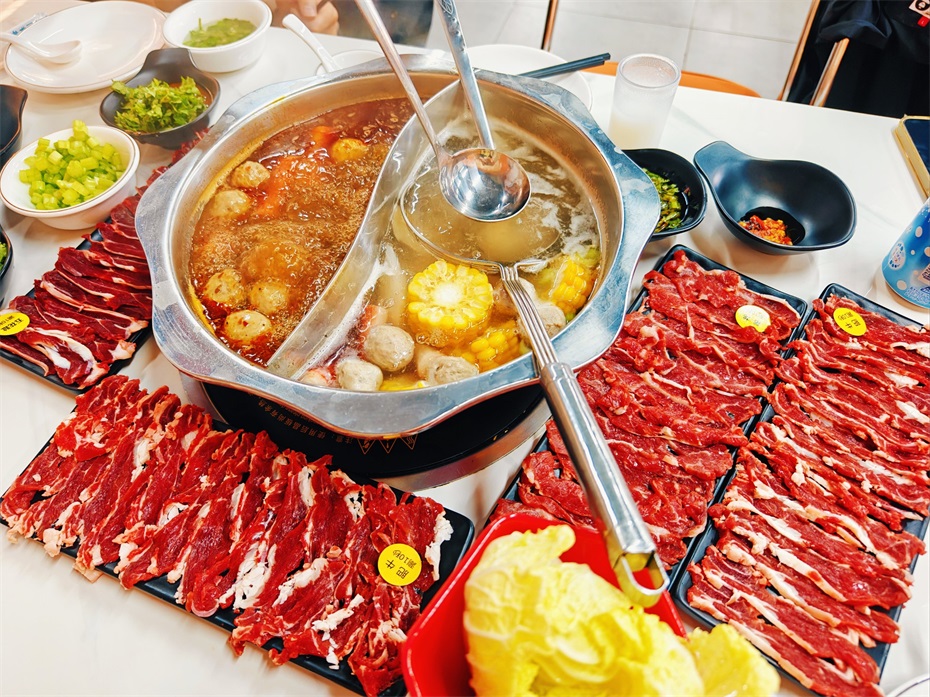Guangdong Province
Overview of Guangdong Province

Guangdong Province, referred to as "Guangdong" for short, is located in the south of the Nanling Mountain Mountains and on the coast of the South China Sea. It is the largest province in terms of economy and population in China. The province has a land area of 179800 square kilometers and a sea area of 419000 square kilometers, with 21 prefecture level cities under its jurisdiction and a permanent population of 126.568 million people (2022 data). In 2022, the total regional GDP of the province reached 12.91 trillion yuan, ranking first in the country for 34 consecutive years. The total import and export volume of foreign trade accounted for more than one-fifth of the country's total, making it the vanguard, pioneer, and experimental zone of China's reform and opening up.
Guangdong Province currently governs 21 prefecture level cities including Guangzhou (provincial capital), Shenzhen, Zhuhai, Shantou, Foshan, Shaoguan, Heyuan, Meizhou, Huizhou, Shanwei, Dongguan, Zhongshan, Jiangmen, Yangjiang, Zhanjiang, Maoming, Zhaoqing, Qingyuan, Chaozhou, Jieyang, and Yunfu, with Guangzhou and Shenzhen being sub provincial cities. As the forefront of China's opening-up to the outside world, Guangdong is known as the "Lingnan Hot Land" and "Reform Window", and is also an important birthplace of the Maritime Silk Road.
2Īó Geographical features
1. Location characteristics
Guangdong Province is located between 20 ĪŃ 09 Īõ -25 ĪŃ 31 Īõ north latitude and 109 ĪŃ 45 Īõ -117 ĪŃ 20 Īõ east longitude, bordering Jiangxi and Hunan in the north by the Nanling Mountain, Fujian in the east, Guangxi in the west, the South China Sea in the south, and Hong Kong and Macao in the south. The coastline of the province is 4114 kilometers long, ranking first in the country, with 1963 islands. It is an important gateway for economic and trade exchanges between China and Southeast Asia, South Asia, the Middle East, Africa and other regions.
2. Terrain and landforms
The terrain of the whole province is high in the north and low in the south:
North: the Nanling Mountain Mountain (the highest peak, Shikengkong, 1902m above sea level)
Central region: hills and plateaus
South: the Pearl River Delta Plain (23% of the provincial area)
Coastal areas: plateaus, plains, and islands
3. Water system distribution
The Pearl River water system: three major tributaries of Xijiang River, Beijiang River and Dongjiang River
Hanjiang River System: Major Rivers in Eastern Guangdong
Jianjiang River System: Major Rivers in Western Guangdong
Independent rivers flowing into the sea: Rongjiang, Moyang River, etc
4. Climate characteristics
Belonging to tropical and subtropical monsoon climate:
Annual average temperature: 19-24 Īµ
Annual precipitation: 1300-2500 millimeters
Significant features: Warm and rainy weather, frequent typhoons
3Īó Historical context
1. Origin of Civilization
Paleolithic Age: Maba Man Site (128000 years ago)
Neolithic Age: Shixia Culture (4500 years ago)
Pre Qin period: the activity area of the Baiyue ethnic group
2. Organizational history
Qin Dynasty: Establishment of Nanhai Commandery
Tang Dynasty: Establishment of Lingnan Road
Song Dynasty: Guangnan East Road, named after "Guangdong"
Ming and Qing Dynasties: The basic formation of Guangdong Province
3. Modern and Contemporary Development
1840: The Opium War broke out
1911: Huanghuagang Uprising
1978: Pioneer of Reform and Opening Up
21st Century: Construction of the Guangdong Hong Kong Macao Greater Bay Area
4Īó Cultural Essence
1. Regional cultural characteristics
Guangfu culture: pragmatic, open, and inclusive
Chaoshan culture: refined and elegant, heavy commercial tradition
Hakka culture: reverence for culture, emphasis on education, and pioneering spirit
Ocean culture: open and inclusive, daring to be the first
2. Intangible Cultural Heritage

Folk art: Guang embroidery, Chao embroidery, Shiwan pottery sculpture
Traditional skills: Guangcai, Duan Yan, and herbal tea preparation
Folk culture: lion awakening, Loong Boat racing, flower street
3. Dialect characteristics
Cantonese: Pearl River Delta and Western Guangdong region
Chaoshan dialect: Coastal areas of eastern Guangdong
Hakka dialect: parts of northern and eastern Guangdong
Leizhou dialect: Leizhou Peninsula region
5Īó Tourist destinations
1. World Heritage Sites
the Kaiping Diaolou and Villages
Danxia Mountain (China Danxia)
South China Karst (Huanjiang Libo)
Maritime Silk Road (Guangzhou, Yangjiang)
2. 5A level scenic spot

Shenzhen Overseas Chinese Town Tourist Resort
Shaoguan Danxia Mountain Scenic Area
Foshan Changlu Tourism Leisure Expo Park
Huizhou West Lake Scenic Area
3. Featured tourism
Urban style tour: Guangzhou Tower, Shenzhen Qianhai
Coastal leisure tourism: Chimelong in Zhuhai, Pengzhou Island in Zhanjiang
Lingnan Cultural Tour: Chen Family Temple, Chaozhou Ancient City
Red Study Tour: Former Site of Huangpu Military Academy
6Īó Food map
1. Characteristics of Cantonese cuisine
Cantonese cuisine: White cut chicken, hot soup
Chaozhou cuisine: braised dishes, beef balls
Hakka cuisine: salt baked chicken, Stuffed tofu
Dongjiang cuisine: preserved pork belly with pickled vegetables
2. Featured snacks

Wonton noodles
Little pan rice
double-layer steamed milk custard
Chaoshan Beef Hotpot
3. Specialty drinks
Phoenix Dancong Tea
Xinhui Chenpi
Zhujiang Beer
Wanglaoji Herbal Tea
7Īó Development Status
1. Industrial system
Electronic information: leading companies such as Huawei and Tencent
Home appliance manufacturing: Midea, Gree and other brands
Automobile industry: Guangzhou Automobile Group, BYD and other enterprises
Modern service industry: finance, logistics, exhibition
2. Transportation network
Ports: Shenzhen Port, Guangzhou Port, among the top ten in the world
High speed railway: "Three Vertical and Four Horizontal" backbone network
Airlines: Guangzhou Baiyun, Shenzhen Bao'an International Airport
Highway: The mileage of expressways exceeds 11000 kilometers
3. Open platform
National Strategy of Guangdong Hong Kong Macao Greater Bay Area
Shenzhen Demonstration Zone for Socialism with Chinese Characteristics
Hengqin Guangdong Macao Deep Cooperation Zone
Qianhai Shenzhen Hong Kong Modern Service Industry Cooperation Zone
From Lingnan Ancient Towns to the Bay Area Metropolis, from the forefront of reform to the opening door, this hot land of "daring to be the first in the world" is writing the chapter of Chinese path to modernization in Guangdong with the spirit of "pioneering", the momentum of "innovation", and the style of "doing". Here, there is both the poetic meaning of 'the moon rises on the sea' and the grandeur of 'the tide is flat and the two sides are wide', which is becoming an important window to showcase the superiority of the socialist system with Chinese characteristics.
simliy
